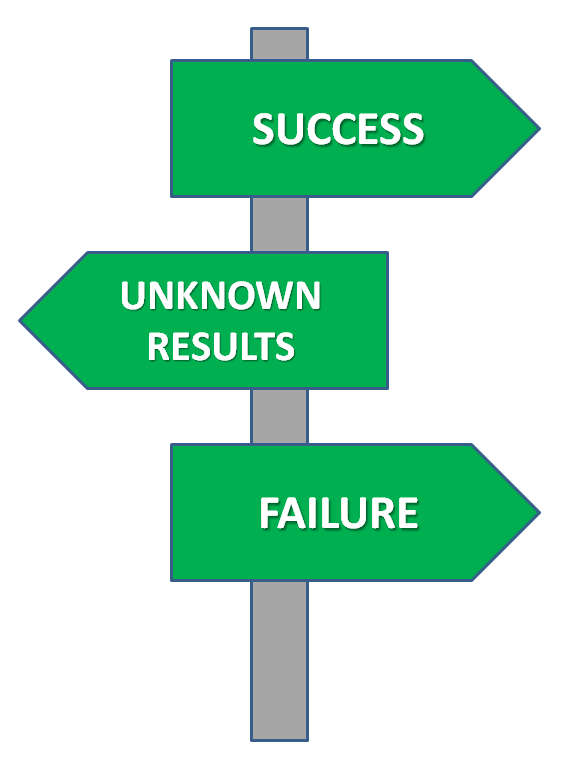As we travel down the path of Enterprise Architecture, there are various times when important decisions must be made. Hopefully, we have a tool that will help us make those decisions that is a little more clear than the signpost shown here. But there are many times, not just within the scope of Enterprise Architecture, that we come to a decision point, and we are either presented with poor information or no information at all.
How do we overcome this challenge that, at times, appears to be fated to fail no matter how hard we try to succeed? Or we can make what appears to be a good decision at the time, but then we start to doubt our choice as time goes on.

Image Source: Wikipedia
I ran into a situation like this while on vacation a few weeks ago. My wife and I were up in Upstate NY along the edge of Lake Ontario. As we were driving east from Niagara towards Rochester, our GPS map directed us to take the ramp onto Lake Ontario Parkway. It seemed like a good idea as it appeared on the map to bypass a lot of local traffic, so we took the ramp and got onto the parkway. However, very quickly we started doubting the wisdom of that choice. The road was an old concrete highway that had many patches and potholes. We drove for at least 10 minutes without seeing another vehicle on either direction! Frankly, I had started to wonder if the road was really still in use when we saw another vehicle coming the opposite direction, and eventually the road surface improved. In reality, the route was an excellent choice and saved us a lot of time; however, the western portion of the parkway is in serious need of repair and apparently is a topic of some contention for the locals.
We clearly had a tool that was guiding us towards making an intelligent decision, yet we immediately started doubting the choice. And I am sure we have all had the occasion where our GPS system gave us poor or even completely wrong directions.
In the business, technology and Enterprise Architecture worlds, the same situation can occur. There are tools available to be used which assist in decision making. It is up to the user to properly weigh the guidance of the tool and decide on the right course of action.
In this past week’s group assignment, I happened to pick the Enterprise Architecture Principles artifact to study and analyze. This is a perfect example of a business tool used to help in the decision making process. According to TOGAF definitions, Enterprise Architecture Principles “define the underlying general rules and guidelines for the use and deployment of all IT resources and assets across the enterprise. They reflect a level of consensus among the various elements of the enterprise and form the basis for making future IT decisions.” (TOGAF – Architecture Principles)
So we establish a set of guidelines to help us measure and test all decisions that are made. A “measuring stick” per se. Yet, the creation of these guiding principles itself is a large challenge. If the principles are too broad, then every decision could be made to fit the proper criteria. If the principles are too narrow, the business will be in a bottleneck as decision making would have to be inspected with a magnifying glass to assure if it meets all the rigorous criteria needed. We are stuck between the loose suggestions versus the rigid laws.
By building our guidelines based on existing business strategy and requirements, we can establish an ideal “boundary” for any decision making activities. Only by establishing this business context do we have clarity regarding the proper application of the guiding principles.
By successfully navigating the twists and turns of our complex business strategies and environments, and confidently relying on the tools we are provided, we can successfully reach our final destination.
#ea872 #guideposts #lighthousesoflakeontario

